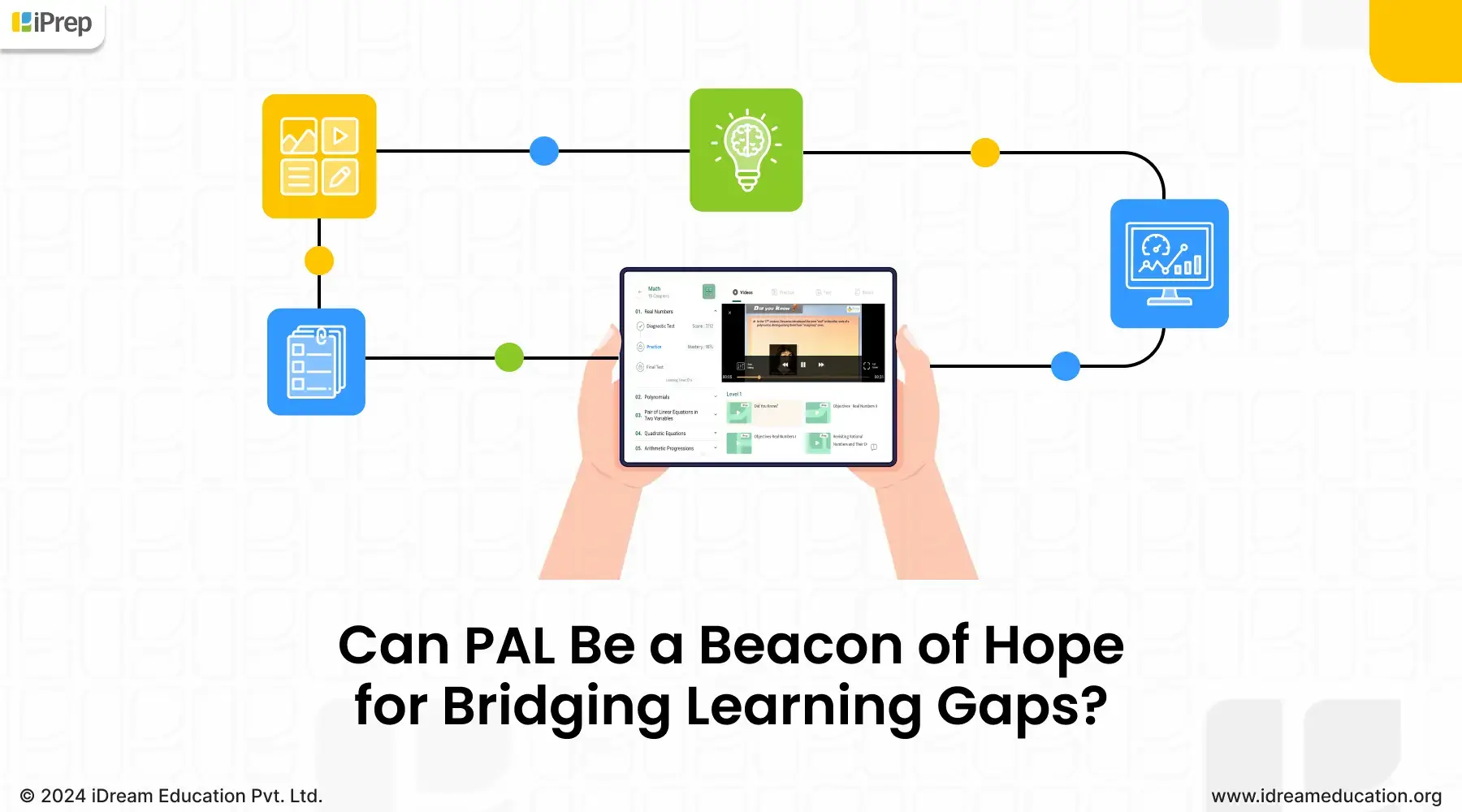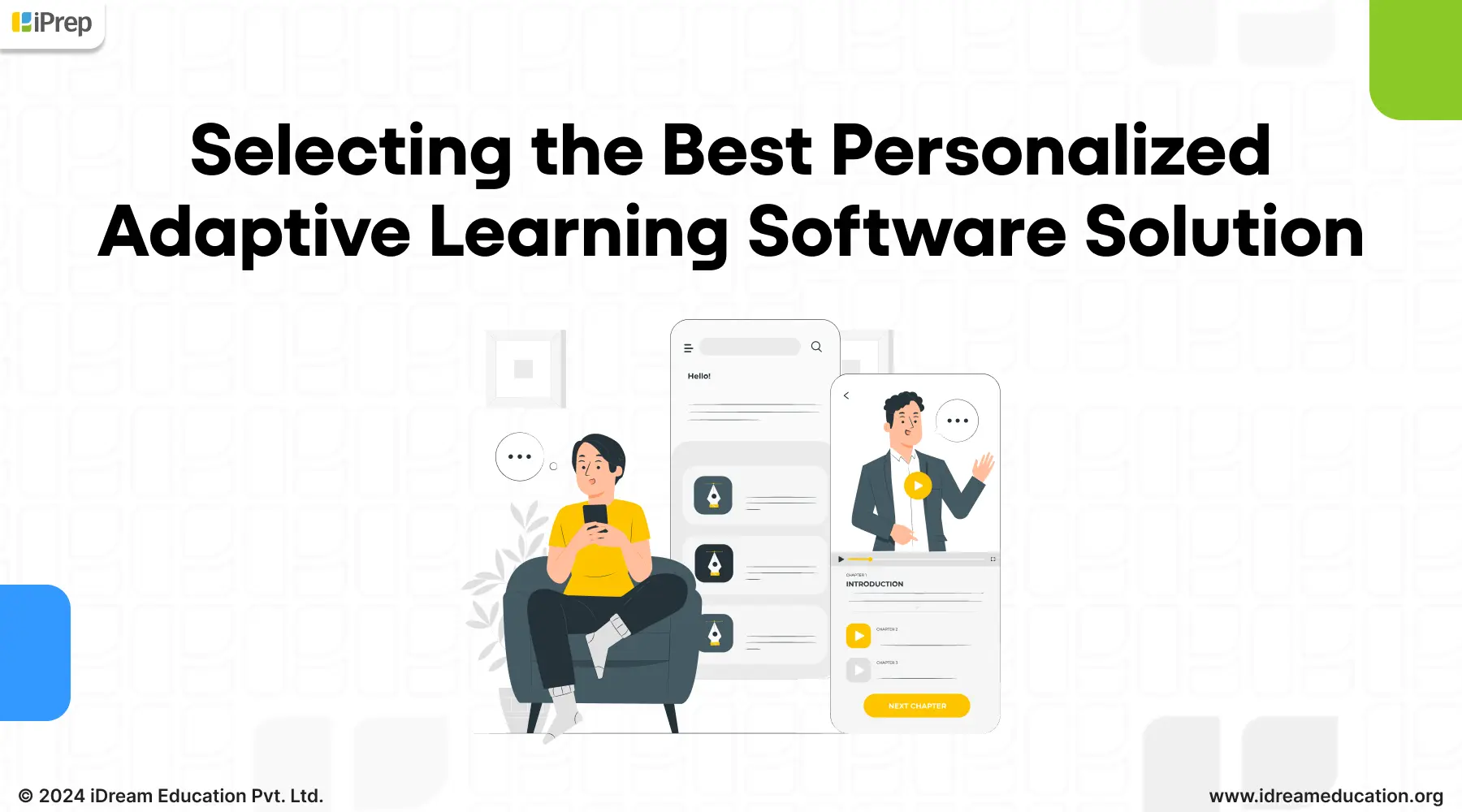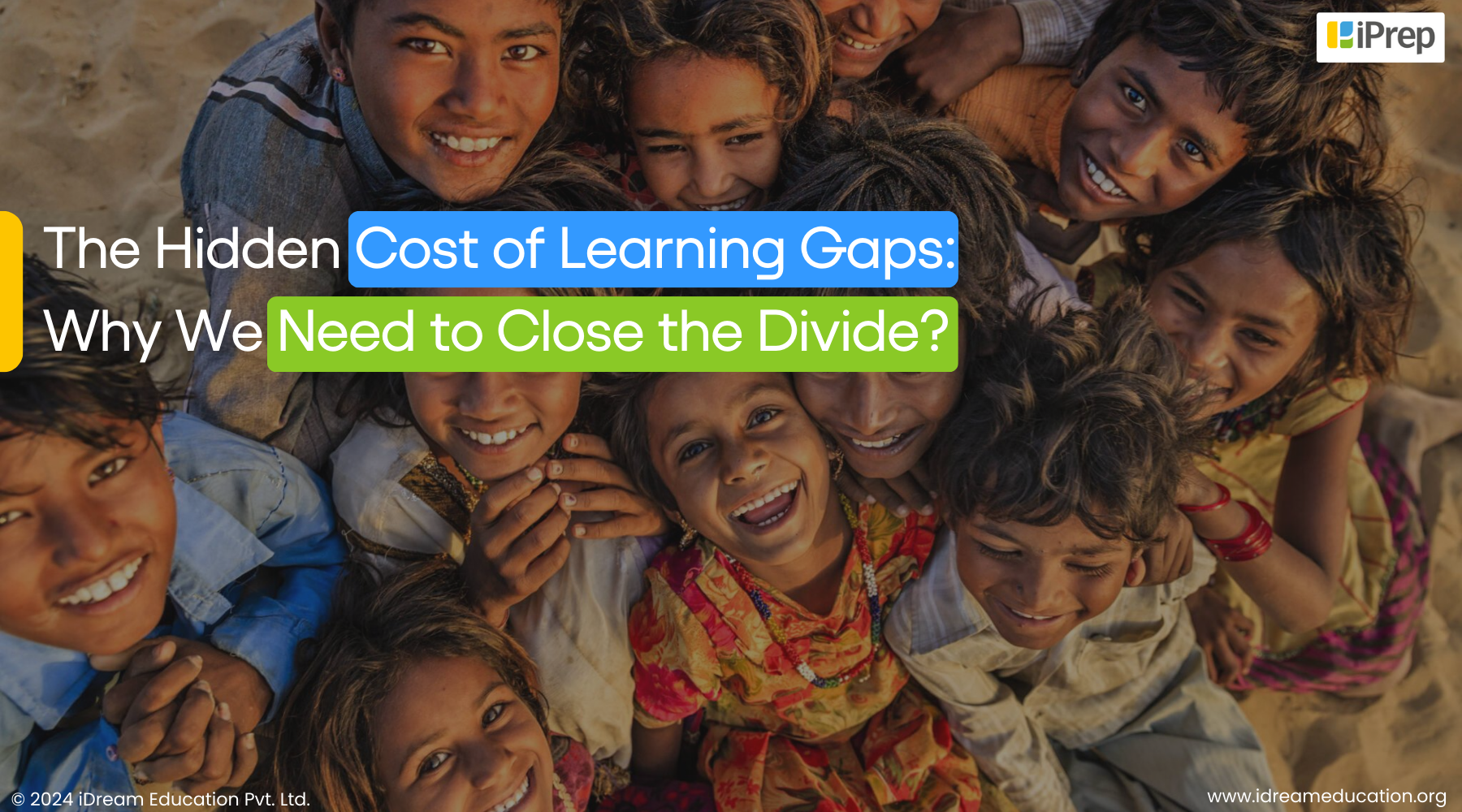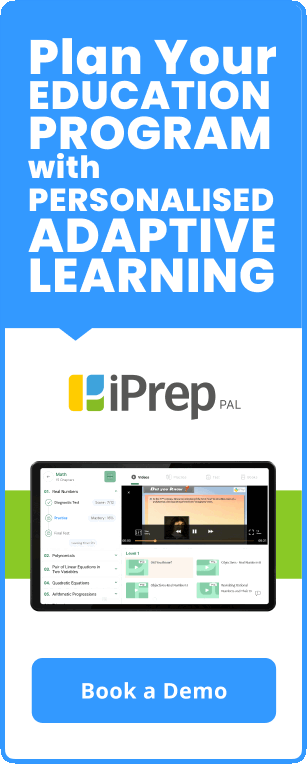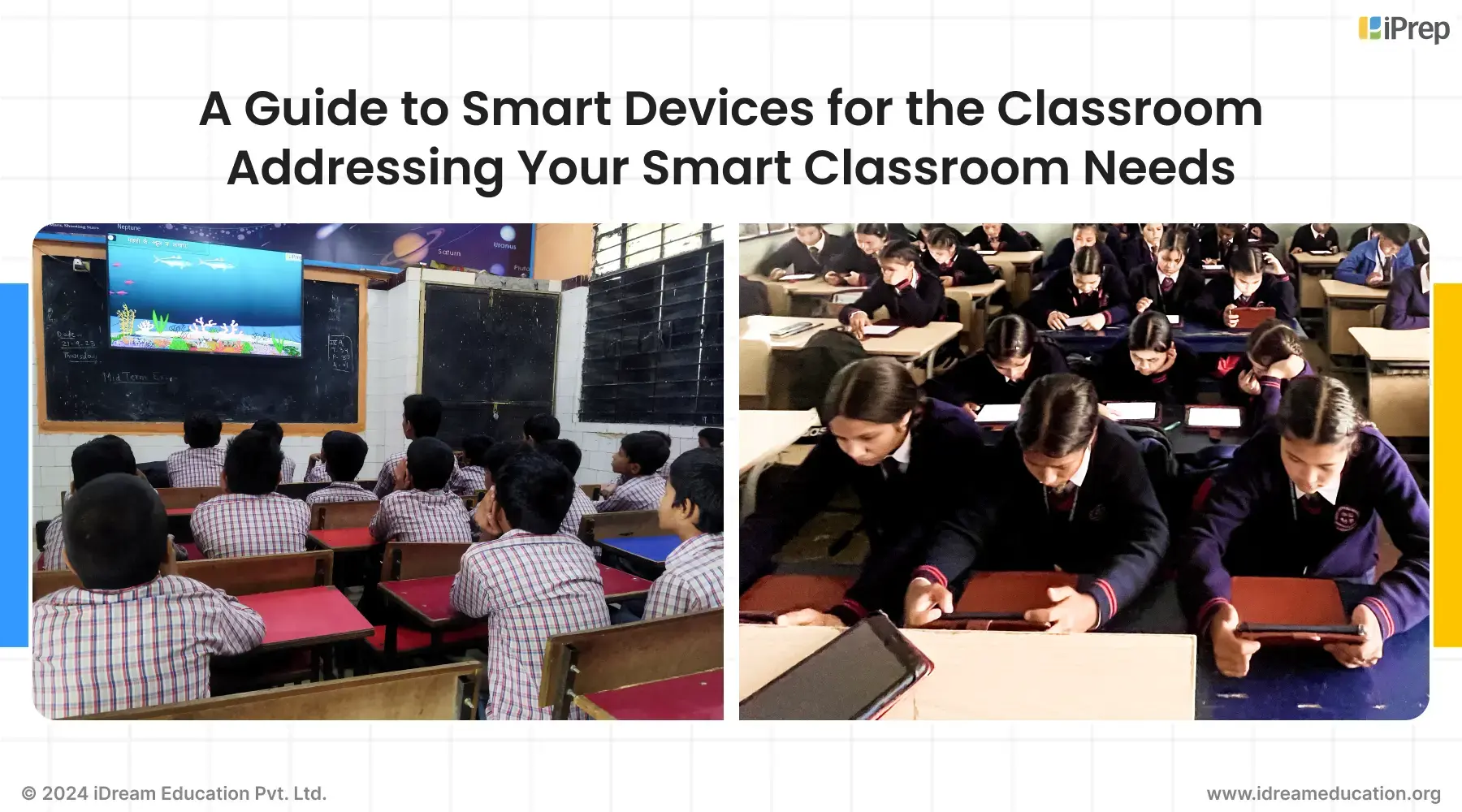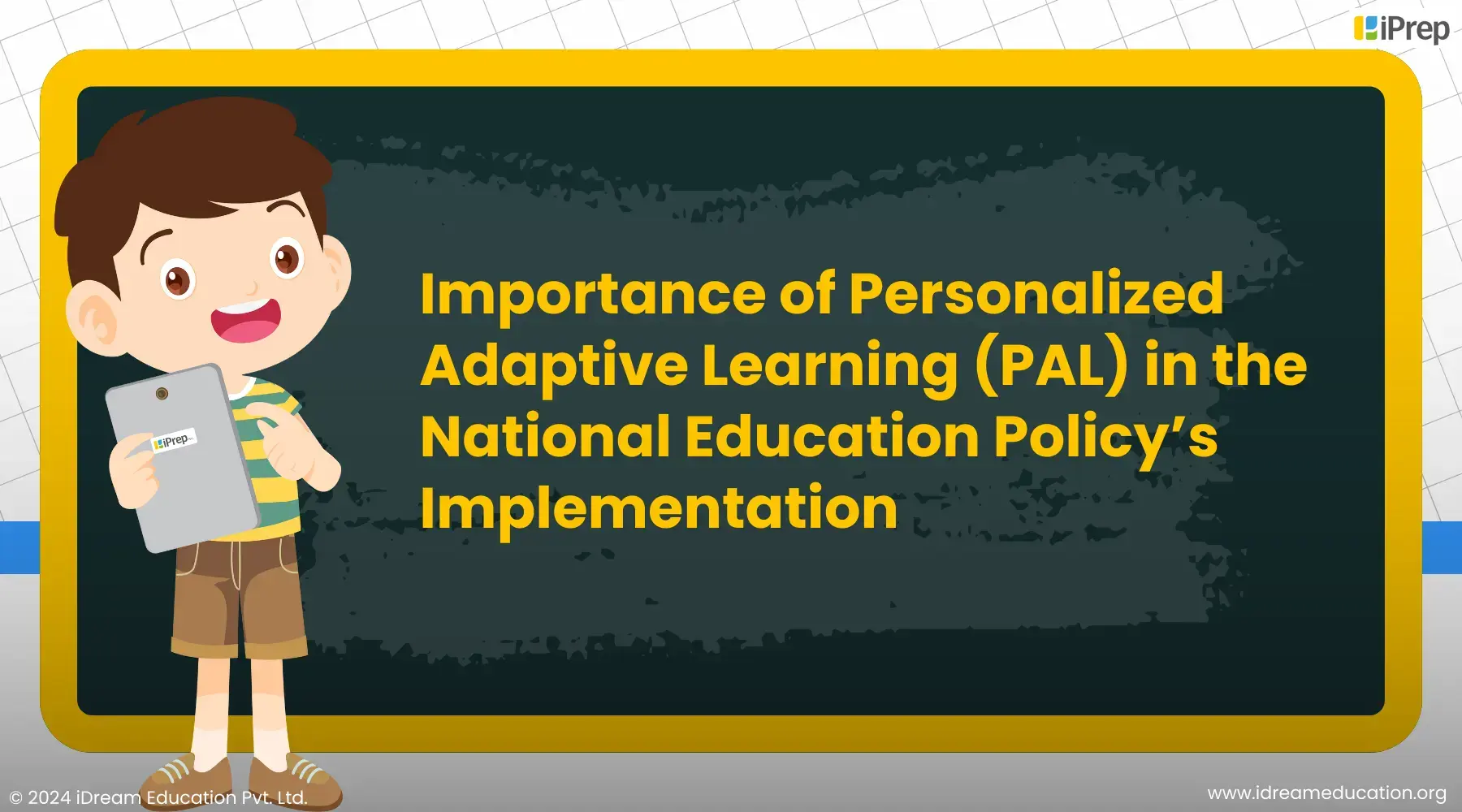Catering To Different Learning Styles of Students with Personalized Adaptive Learning
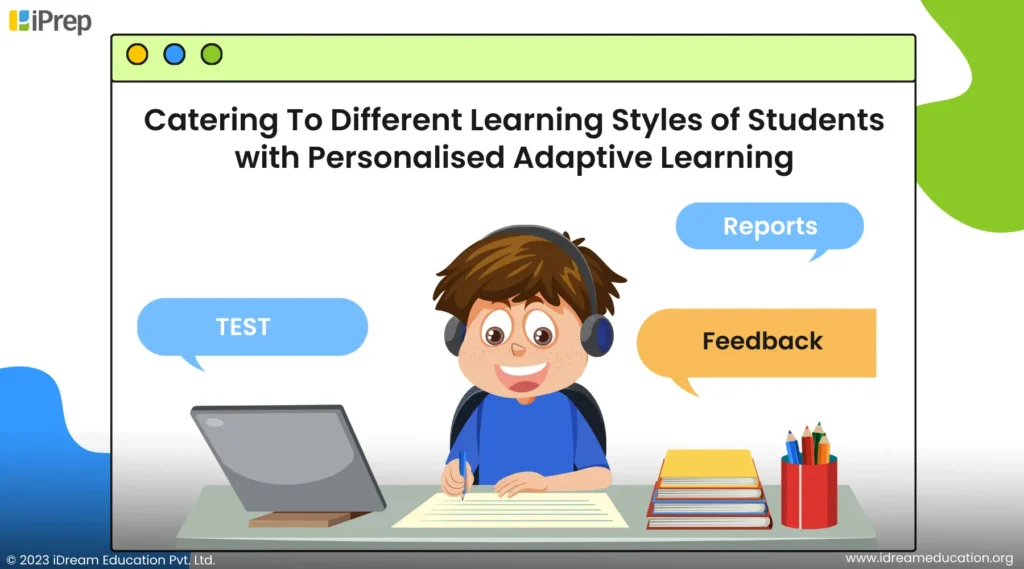
Every student is unique and possesses a diverse array of learning styles and preferences. The pace of learning for every child also differs. Some grasp new concepts swiftly, while others benefit from an unhurried approach. Some students resort to rote learning to cope up with academic demands, while others insist on the deeper understanding that comes with conceptual clarity. Recognizing and embracing this diversity is not just an educational virtue; it’s a necessity.
Teachers stand at the intersection of this diversity, charged with the monumental task of not just imparting knowledge but tailoring their methods to meet the distinct needs of every learner. This blog explores the important role of personalized adaptive learning in navigating the complex landscape of diverse learning styles of students and creating an inclusive and effective educational environment where every student can thrive.
Now, let’s delve into the causes behind the different learning styles of students.
What are the Factors Influencing the Diverse Learning Styles of Students?
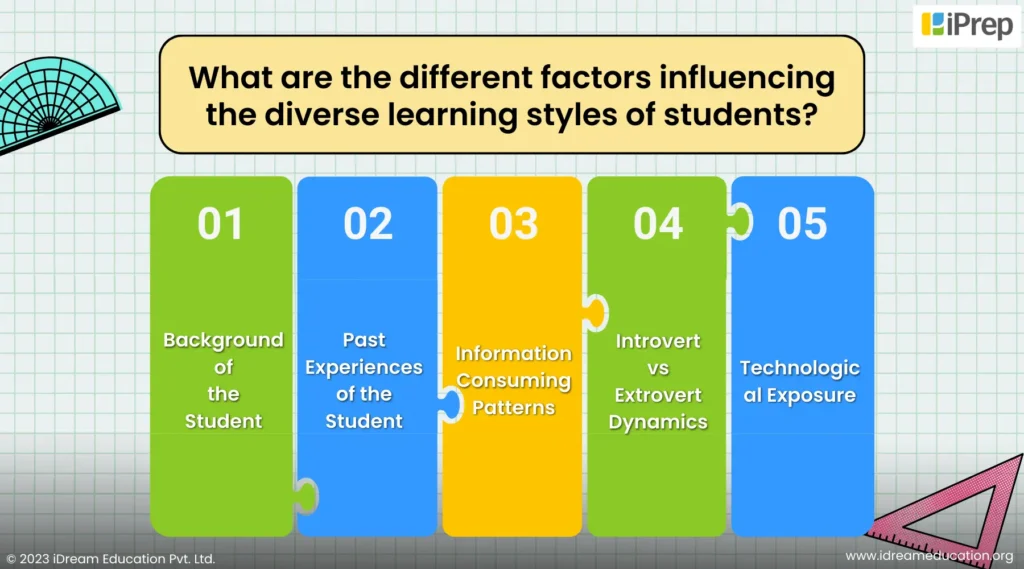
The diverse learning styles observed among students can be attributed to many factors, each shaping how individuals engage with and absorb information. Let’s explore these causes in detail:
Socio-economic Background of the Student
Socioeconomic status and family environment are important factors contributing to diverse learning styles of students. The economic context in which a student grows up significantly affects the availability of educational resources and opportunities. Within the family unit, parental involvement in education plays a crucial role in shaping a student’s attitude toward learning. Supportive family environments often cultivate a positive approach to education.
The language spoken at home and a student’s proficiency in that language are also influential factors. Proficiency in a particular language can impact student’s comfort level with certain subjects and instructional methods, influencing their learning styles.
Past Experiences of the Student
Students’ past experiences serve as a significant determinant in shaping their learning styles. Whether characterized by positive or negative elements, these experiences contribute to forming preferences, attitudes, and approaches to learning. Students who have encountered positive educational experiences are inclined to develop a favorable attitude toward education.
Such positive encounters foster an open-minded and explorative approach to learning, thereby contributing to developing a more adaptive and versatile learning style. Conversely, negative experiences may lead to avoiding specific subjects or a preference for instructional approaches that align better with individual inclinations. Individuals who face consistent challenges, criticism, or unsupportive learning environments may develop a reluctance to engage with certain subjects.
The instructional methodologies teachers employ in a student’s prior educational experiences substantially influence their learning preferences. Success or challenges encountered in particular subjects can significantly shape the learning styles of students. The outcomes of these experiences often manifest as variations in learning styles across different subjects.
Information Consuming Patterns
Information-consuming patterns are a pivotal determinant contributing to the different learning styles of students. These patterns delineate how students assimilate, process, and retain information, thereby playing a crucial role in shaping an individual’s preferred approach to learning.
Students manifest varying preferences in their information-consuming patterns, with some inclining towards rote memorization while others emphasize conceptual understanding. Additionally, each student possesses unique ways of learning, and their pattern may align with distinct modalities such as visual or auditory.
Visual learners tend to comprehend concepts expeditiously through visual aids, such as videos or graphical representations, while auditory learners derive understanding through listening. Further, the approach to problem-solving and assessments varies among students. Some students prefer direct engagement with problem-solving activities to foster comprehension, while others lean towards structured assessment modules, providing a systematic overview of the subject matter.
Introvert vs Extrovert Dynamic
The dynamics of introversion and extroversion are an important determinant contributing to the different learning styles of students. Introverted students typically manifest a preference for solitary and independent learning environments. Thriving in quiet settings, they favor individual study sessions and are inclined to learn and reflect. In contrast, extroverted students thrive in socially interactive learning environments, deriving enjoyment from group discussions, collaborative projects, and active engagement with peers to augment their understanding.
Extroverts find verbal communication and active participation in class activities encouraging and advantageous to their learning experience. Conversely, introverted learners may be more reserved in expressing ideas or seeking clarification within group settings. They often favor the expression of their thoughts through writing, a method that allows for the deliberate and thoughtful articulation of ideas.
Recognizing and accommodating these divergent dynamics is pivotal for teachers, enabling the creation of a learning environment that caters to the different learning styles of students, both introverted and extroverted.
Technological Exposure
Technological exposure significantly influences the different learning styles of students, distinguishing between digital natives and immigrants. Digital Natives are the people who grew up using technology, like smartphones and computers, from a young age. It’s like second nature to them because they’ve always had it around. Digital immigrants are the people who didn’t grow up with technology and had to adapt to it later in life. It’s not as natural for them, and they must learn how to use it.
Those well-versed in technology often prefer online resources, multimedia learning, and collaborative digital tools. Their adoption of e-learning platforms and preference for problem-solving through technology shape their independent and technology-driven learning styles. Recognizing these preferences is essential for teachers, as it allows for integrating technology into teaching methods, creating a more inclusive and effective learning environment that aligns with the expectations and experiences of technologically immersed students.
Understanding and appreciating the factors influencing the diverse learning styles of students is the first step toward creating an inclusive educational environment that caters to the individual needs of each learner.
Now, let’s look at how an approach like personalized adaptive learning helps the diverse learning styles of students.
How Can a Personalized Adaptive Learning Approach Help?
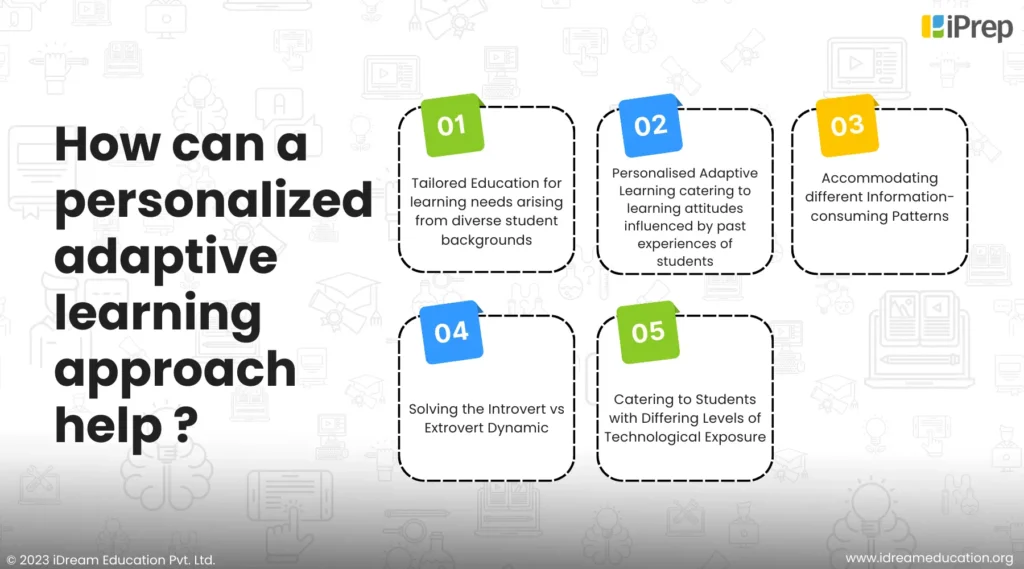
A personalized adaptive learning approach is a valuable strategy to address the diverse learning styles of students. This approach recognizes that students have unique backgrounds, experiences, and preferences, tailoring education to meet individual needs. By considering factors such as cultural background, socioeconomic status, and family environment, personalized adaptive learning ensures that the learning experience is relatable and meaningful for each student.
Tailored Education for Learning Needs Arising From Diverse Student Backgrounds
Personalized adaptive learning is an innovative teaching approach that tailors the curriculum to each student’s unique background. A study by EdTech Review revealed that students using personalized learning technology had a retention rate of 15-20% higher and a satisfaction rate of 20-25% higher than students using traditional instructional methods. According to the same study, attendance rates were 10-15% higher.
To comprehend the unique needs, interests, and learning styles of students, this approach leverages innovative technology and data analytics. Teachers can create a more inclusive and productive learning environment by using this data to dynamically modify educational materials, pacing, and assessment techniques. This adaptive method enables students from different backgrounds, with varying learning styles and cultural contexts, to receive customized support that enhances their engagement, understanding, and overall academic performance.
Personalized Adaptive Learning Catering to Learning Attitudes Influenced by Past Experiences of Students
Adaptive learning that caters to students’ learning attitudes influenced by their past experiences is a personalized educational approach. This method recognizes the significance of each student’s unique learning history and tailors the learning experience to accommodate their diverse past experiences. By leveraging advanced technology and data analytics, this approach identifies individual learning styles, taking into account the varied academic backgrounds and experiences of the students.
Customization of exams, pacing, and learning materials based on individual profiles allows educators to create a responsive and inclusive learning environment. This personalized approach ensures that students with different prior experiences receive targeted support aligned with their preferred learning methods. The emphasis on understanding and adapting to a variety of learning methods enables the establishment of a more efficient and customized educational path for every student.
Accommodating Different Information-Consuming Patterns
Personalized adaptive learning, designed to accommodate diverse Information-consuming patterns, represents an innovative educational approach that recognizes the importance of individualized learning styles of students. Leveraging advanced technology and data analytics, this methodology identifies and adapts to students’ unique ways of consuming information, whether through visual, auditory, or kinesthetic modalities. By tailoring instructional content, pacing, and assessments based on these distinct patterns, educators create a more responsive and engaging learning environment. This approach ensures that students with different information-consuming preferences receive targeted support, enhancing their comprehension and retention.
Solving the Introvert vs Extrovert Dynamic
Personalized adaptive learning is a forward-thinking educational strategy that acknowledges the diverse learning styles of students. By incorporating advanced technology and data analytics, this approach discerns individual preferences related to introverted or extroverted tendencies. According to Carnegie Mellon University, students using personalized learning technology showed an average engagement increase of 10-20% compared to those using traditional instructional methods.
The University of Illinois found that these students demonstrated an average improvement of 8-11% in learning outcomes. Irrespective of whether a student is introverted or extroverted, a personalized learning platform such as iPrep PAL can diagnose their learning levels accurately. The diagnostic process of iPrep PAL does not involve group activities or judgment. Instead, it dynamically increases difficulty and administers diagnostic tests tailored to individual learning levels. This allows introverted students to take the tests in their personal space, and iPrep PAL subsequently creates a learning path based on their performance. There is no requirement for students to engage in group activities or perform in front of others.
Catering to Students with Differing Levels of Technological Exposure
By leveraging advanced technology and insightful data analytics, personalized adaptive learning discerns individuals’ preferences and comfort levels with various technological tools and platforms. In a separate study at the University of Texas, students using adaptive learning technologies received feedback 3-5 times more frequently and accurately than those using traditional instructional methods.
Subsequently, instructional content, interactive elements, and assessment methods are dynamically adjusted to align with each student’s technological background. Recognizing and accommodating these technology-related learning styles fosters a more inclusive and effective educational experience, meeting students at their comfort levels and facilitating the seamless integration of technology into their learning journey.
In short, a personalized adaptive learning approach is designed to meet students where they are, considering their strengths and preferences. By understanding and appreciating the diverse learning styles of students, teachers can create a more inclusive and effective learning environment that empowers students for success.
Now, let’s look at how iPrep PAL caters to personalized adaptive learning for diverse learning styles of students in the following section.
How iPrep PAL Facilitates Personalised Adaptive Learning?
iPrep PAL, an innovative learning solution, stands out for its commitment to catering to the diverse learning styles of students through a forward-looking and personalized adaptive learning approach. This multifaceted strategy ensures that each student’s unique preferences are considered, fostering an engaging and effective educational experience.
To begin with, iPrep PAL recognizes and accommodates the varied learning styles of students by customizing content delivery based on individual needs. Whether a student benefits from hands-on activities or visual aids or prefers conceptual understanding over rote memorization, iPrep adapts its approach accordingly. This flexibility empowers students to learn in a way that aligns with their strengths, creating a more personalized and meaningful learning journey.
What’s More?
Moreover, iPrep PAL embraces diverse information-consuming patterns by offering a range of modalities, including visual and auditory learning tools. Whether a student leans towards rote memorization or prefers a more conceptual understanding, the platform caters to these preferences. Additionally, iPrep PAL recognizes mastery levels, allowing students to progress when they have demonstrated a solid understanding of a topic, avoiding unnecessary repetition for those who have already mastered certain concepts.
To understand the dynamics of introversion and extroversion, iPrep PAL provides opportunities for independent study and collaborative activities. Acknowledging different learning environments ensures a more inclusive and accommodating educational experience.
Taking advantage of technology, iPrep PAL engages students by integrating online resources, multimedia learning tools, and collaborative digital features. This tech-savvy approach considers the influence of technological exposure on learning styles, aligning the platform with the expectations and experiences of technologically immersed students.
In essence, iPrep’s personalized adaptive learning approach is a comprehensive solution considering individual strengths, preferences, and technological influences. By tailoring content delivery, addressing diverse learning styles of students, and leveraging technology, iPrep creates an inclusive and effective learning environment that empowers students for success in their educational journey.
Let’s Conclude
Learning encompasses diverse styles and preferences. This piece explores the factors influencing these differences, such as socioeconomic background, past experiences, information-consuming patterns, personality, and technological exposure.
Recognizing this diversity, personalized adaptive learning emerges as a crucial strategy. This approach tailors education to individual needs, accommodating various information-consuming patterns and leveraging technology effectively. iPrep PAL exemplifies this approach, adapting content delivery, recognizing mastery levels, and providing opportunities for independent and collaborative learning.
Personalized adaptive learning is the key to creating an inclusive educational environment. By understanding the diverse learning styles of students and leveraging technology intelligently, iPrep PAL facilitates a purposeful and successful educational path by enabling students to achieve mastery over any subject or concept.
Frequently Asked Questions -
1. What are the main elements impacting the varied Learning Styles of Students?
Diverse learning styles are shaped by various factors, such as socio-economic backgrounds, financial situations, past experiences, habits of consuming information, individual personalities, and exposure to technology.
2. How does personalized adaptive learning cater to different learning styles of students?
By taking into account learning gaps that might arise out of socio-economic backgrounds, prior experiences, information-consuming habits, personality, and technological exposure, personalized adaptive learning adjusts instruction to meet the needs of each student. It modifies tests, pacing, and content delivery to establish a welcoming and productive learning environment.
3. How does socioeconomic background impact the learning styles of students?
The socioeconomic background of a student shapes the accessibility of educational resources and opportunities, impacting their approach to learning. Variances in economic backgrounds may lead to different preferences and attitudes toward education.
4. How does the iPrep PAL platform accommodate diverse learning styles of students?
iPrep PAL recognizes and accommodates varied learning styles by customizing content delivery based on individual needs. It offers a range of modalities, including visual and auditory tools, and provides opportunities for both independent study and collaborative activities. This platform leverages technology to engage students according to their technological exposure.
5. Is personalized adaptive learning useful?
Absolutely. The data from various studies strongly supports the effectiveness of personalized adaptive learning (PAL). Students using PAL tools showed accelerated learning, increased engagement, improved outcomes, higher retention rates, and greater satisfaction compared to traditional instructional methods.
6. What engagement increase did students show when using personalized learning technology?
Students using personalized learning technology showed an average engagement increase of 10-20% compared to those using traditional instructional methods. This highlights the ability of PAL to keep students more involved and interested in their learning.
7. What improvement in learning outcomes was observed in students using personalized learning technology?
The University of Illinois discovered that utilizing personalized learning technology resulted in an average improvement of 8-11% in learning outcomes. This highlights the positive impact personalized learning can have on academic performance.
8. How does personalized learning technology affect retention and satisfaction rates?
A study by EdTech Review uncovered that students who utilized personalized learning technology experienced a retention rate 15-20% higher and a satisfaction rate 20-25% higher compared to students employing traditional instructional methods. These findings suggest that personalized learning not only contributes to improved information retention but also elevates overall satisfaction with the learning process.


